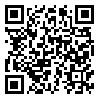Tue, Dec 2, 2025
[Archive]
Volume 14, Issue 41 (2021)
JMED 2021, 14(41): 1-10 |
Back to browse issues page
Download citation:
BibTeX | RIS | EndNote | Medlars | ProCite | Reference Manager | RefWorks
Send citation to:



BibTeX | RIS | EndNote | Medlars | ProCite | Reference Manager | RefWorks
Send citation to:
Takhelchangbam N, Singh N P, Singh A, Saxena D, Bajpai P K, Tripathi U et al . Awareness and Myths Related to COVID-19 among Medical Students at a Tertiary Health Care Facility in Northern India.. JMED 2021; 14 (41) :1-10
URL: http://edujournal.zums.ac.ir/article-1-1422-en.html
URL: http://edujournal.zums.ac.ir/article-1-1422-en.html
NILIMA Takhelchangbam *1, Naresh Pal Singh2, Anamika Singh2, Deepanshi Saxena2, Prashant Kumar Bajpai2, Utkarsh Tripathi2, Arushi Kumar3
1- Uttar Pradesh University of Medical Sciences , nilimatakhel@gmail.com
2- Uttar Pradesh University of Medical Sciences
3- Omax City, Lucknow, India
2- Uttar Pradesh University of Medical Sciences
3- Omax City, Lucknow, India
Abstract: (6260 Views)
Background: Assessing the undergraduate medical students’ knowledge regarding COVID-19 to determine any gaps in their learning and any misinformation is essential. This study aimed to access the awareness regarding COVID-19 and related myths among undergraduate medical students. Methodology: A cross-sectional survey was conducted on undergraduate medical students in a tertiary healthcare teaching institute in a district of central Uttar Pradesh. Unpaired t-test and one-way ANOVA were applied to determine any differences among the mean scores of awareness and myths among gender and batch years. We used boxplots to represent the overall and section-wise correct percentages.
Results: Out of the total 800 students, 494 (61.7%) participated in the study. Most of the participants were first-year MBBS students, 158 (32.0%), and were males (280, 56.7%). The average performance regarding the awareness and myth related to COVID-19 was satisfactory, with a 72.5% overall correct mean score. According to modified Bloom’s cut-off, 406 (82.2%) students performed moderately, followed by 81 (16.4%) students who performed good, and seven (1.4%) performed poorly. Although the majority 489 (99.0%) knew the correct taxonomy of the virus causing COVID-19, 60.0% and 43.0% had difficulty defining the SARS-CoV-2 virus and close contacts, respectively. There was a drastic variation in response to the physical distancing criteria, with only 71 (14.4 %) answered correctly.
Conclusions: As the guidelines regarding COVID-19 are dynamic, there is a need for regular training of undergraduate medical students, focusing on infection control and prevention to keep them updated with the latest and upcoming guidelines.
Results: Out of the total 800 students, 494 (61.7%) participated in the study. Most of the participants were first-year MBBS students, 158 (32.0%), and were males (280, 56.7%). The average performance regarding the awareness and myth related to COVID-19 was satisfactory, with a 72.5% overall correct mean score. According to modified Bloom’s cut-off, 406 (82.2%) students performed moderately, followed by 81 (16.4%) students who performed good, and seven (1.4%) performed poorly. Although the majority 489 (99.0%) knew the correct taxonomy of the virus causing COVID-19, 60.0% and 43.0% had difficulty defining the SARS-CoV-2 virus and close contacts, respectively. There was a drastic variation in response to the physical distancing criteria, with only 71 (14.4 %) answered correctly.
Conclusions: As the guidelines regarding COVID-19 are dynamic, there is a need for regular training of undergraduate medical students, focusing on infection control and prevention to keep them updated with the latest and upcoming guidelines.
Article Type : Orginal Research |
Received: 2021/02/18 | Accepted: 2021/05/22 | Published: 2021/06/14
Received: 2021/02/18 | Accepted: 2021/05/22 | Published: 2021/06/14
Send email to the article author
| Rights and permissions | |
 |
This work is licensed under a Creative Commons Attribution-NonCommercial 4.0 International License. |




